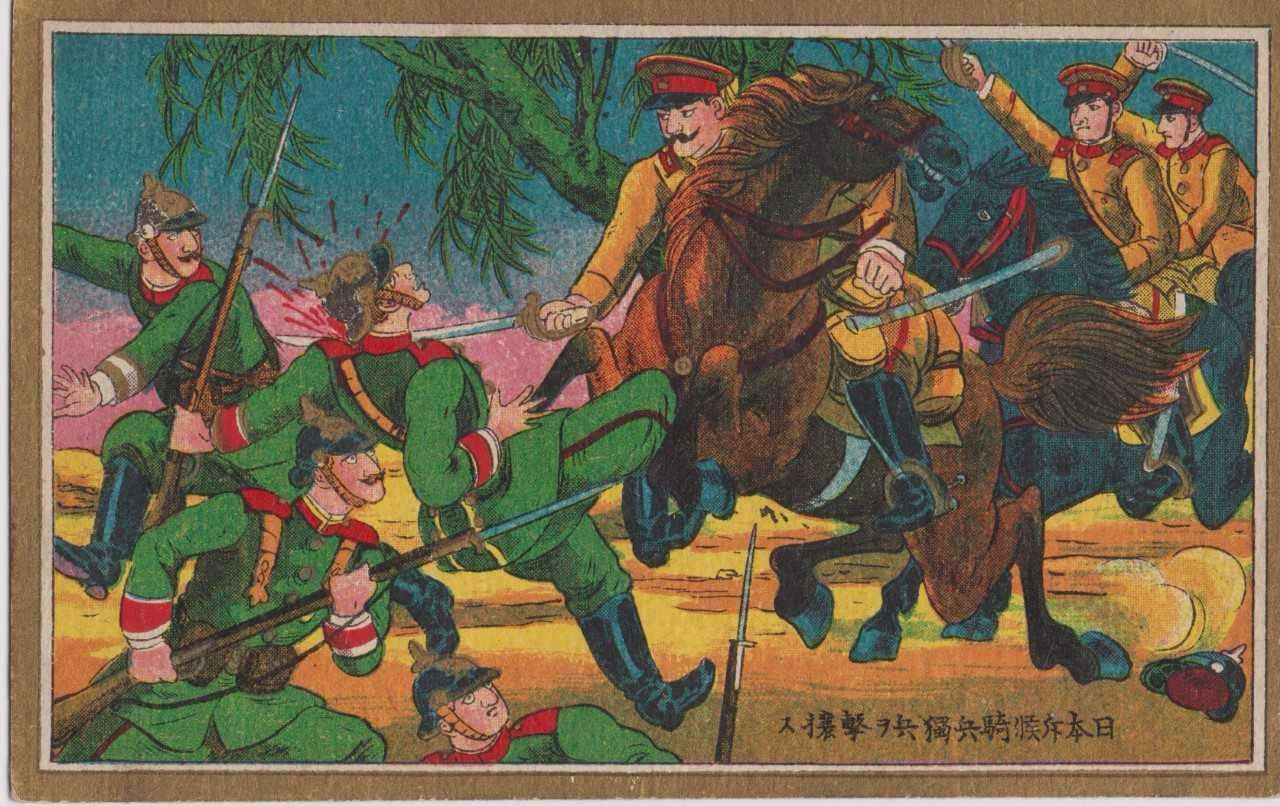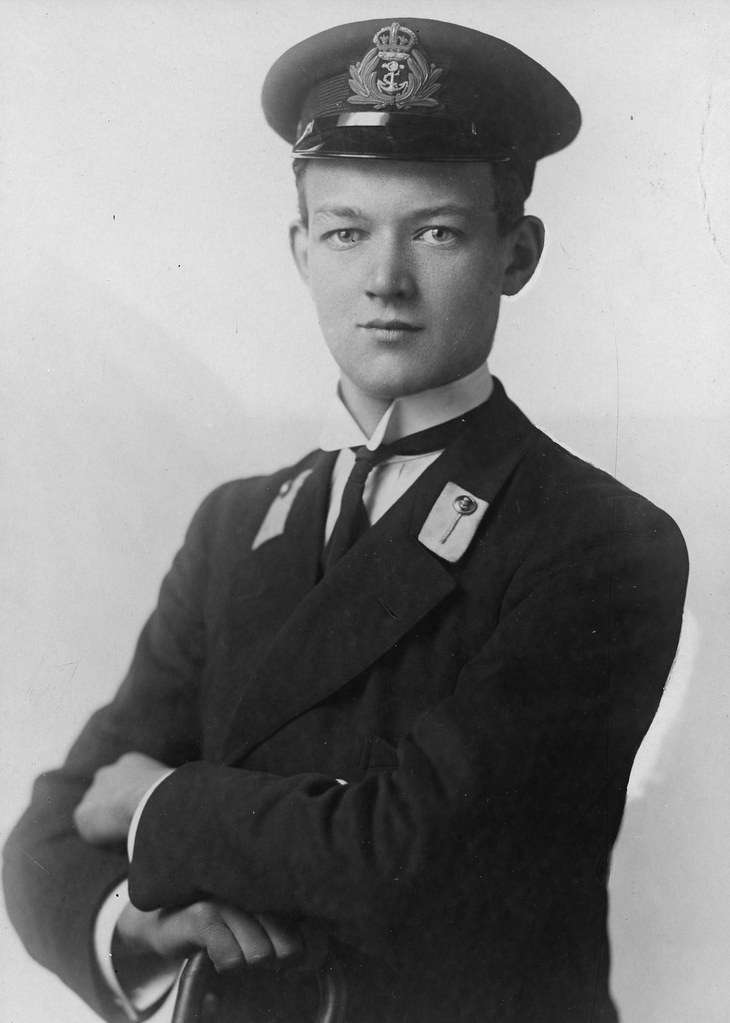Our naval defence correspondent "Neptune" offers another column from his vantage point at the Empire Lounge, Raffles Hotel (reflecting state of play in our PBEM campaign at the conclusion of the game.)
VON SPEE SUNK, PRESUMED DEAD
The Royal Navy has confirmed as fact the Imperial Japanese Navy's claim to have sunk the German light cruiser Nurnberg. The battle occurred in the late evening of November 14, when the IJN cruiser Chikuma (Captain Tatsuo) encountered the German ship and challenged her by lantern. After a moment without satisfactory response, Chikuma opened fire and in a short ensuing fight, sank the lighter ship. Nurnberg sank with guns blazing, but did not land a hit on her opponent.
A handful of survivors were rescued from the dark waters, and they confirmed that Admiral Von Spee was on Nurnberg but was not among those rescued. One German sailor confirmed that the Admiral helped him escape the bridge as the ship heeled over and the deck canted, but an inrush of waters pulled Von Spee down and he presumably perished with most of his crew.
Von Spee was a gallant opponent and deserved the utmost respect for his chivalrous conduct.
EMDEN ESCAPES!!!
News of Von Spee's demise was soured by news that the piratical scourge of the seas, the SMS Emden, has escaped the Royal Navy's dragnet and is presumably on her way to South American waters. News of her escape comes following the seizure of the port of Rabaul by an Australian expeditionary force, which was led into the harbour escorted by the French cruisers Dupleix and Montcalm. Once Captain Juares of the Dupleix found someone sufficiently high ranking to offer surrender, it was determined that Emden has set sail some days previous.
This news will doubtless come as an embarrassment to the Royal Navy, as it had more than sufficient forces in the vicinity of Rabaul, but for reasons that are still unclear, no ship was assigned to blockade the harbour. Such an elementary precaution would no doubt have at the very least have alerted our ships to Emden's presence, and might even have sunk or damaged her. Your correspondent, wise to the ways of Whitehall, suspects that difficult questions will most definitely be asked in the Commons.
CREW RESCUED
If there is a silver lining to the dark cloud of Emden's escape, it is that a British merchant's crew has been freed from captivity at Rabaul by French naval marines. The SS Matheran was the first victim of hostilities, and was captured by the SS Nurnberg days after the war was declared. She was sailed to Rabaul by a German prize crew, her wireless removed and set up to serve a German observation post on a volcanic summit, and her crew then languished for many many weeks. As Captain Mackison remarked, "It weren't all bad, we were treated decent, and had the run of the beaches, the German beer was decent, and the girls were friendly and ... come to think of it, it were quite grand, really. Can we go back?"
CAPTAIN RELIEVED
Captain Robin Danvers of the armoured cruiser HMS Duke of Edinburgh has been relieved of command and is facing a board of inquiry after his ship was damaged in an encounter with a German warship, believed to the Emden, in the Philippine Sea in October. Questions have been asked as to why Captain Danvers turned away from the fight after losing a boiler room and some power after an initial German hit. Even with his speed impaired, his ship should have been more than a match for the Emden.
TRADE RESTORED
All through November, there have been no attacks on our merchant shipping, and all routes have been returning to normal levels of commerce. If the German war aim was to cripple our commerce, then their efforts have been a singular failure. The Royal Navy can now say, with the help of its gallant allies, that the pirates have been met on the high seas and vanquished. While our losses were not insubstantial, particuarly the fine modern battlecruiser HMS Australia, the crack German East Asiatic Squadron will never return home and its sole survivor, the vaunted Emden, will surely be run to ground in South American waters by Admiral Craddock's squadron.
To all the brave parties in this struggle, Neptune raises a glass.
Referee's note:
This last dispatch of the Singapore Sling marks the end of our PBEM campaign, which began in June. The game ended on the 19th turn as the last German player asked if he could exit the board. I agreed, on the grounds that 20 to 1 odds weren't much fun and gave the Allies 1/2 the VP value of Emden, reflecting the fact that she was at least driven out of theatre and is now someone else's problem.
The game ended in mid November, 1914, as a Minor Allied Victory, with a score of 82.5 to the German navy's 67. Our game replicated the limits of the German raider effort in the Pacific, in that despite doing some damage, the sheer number of Allied warships and the constant worries of the German players about finding coal ultimately worked against a German victory. In another post, I'll offer an overview of the game and some final comments. Thanks for reading these posts - I hope you enjoyed reading them as much as I enjoyed writing them! Michael














